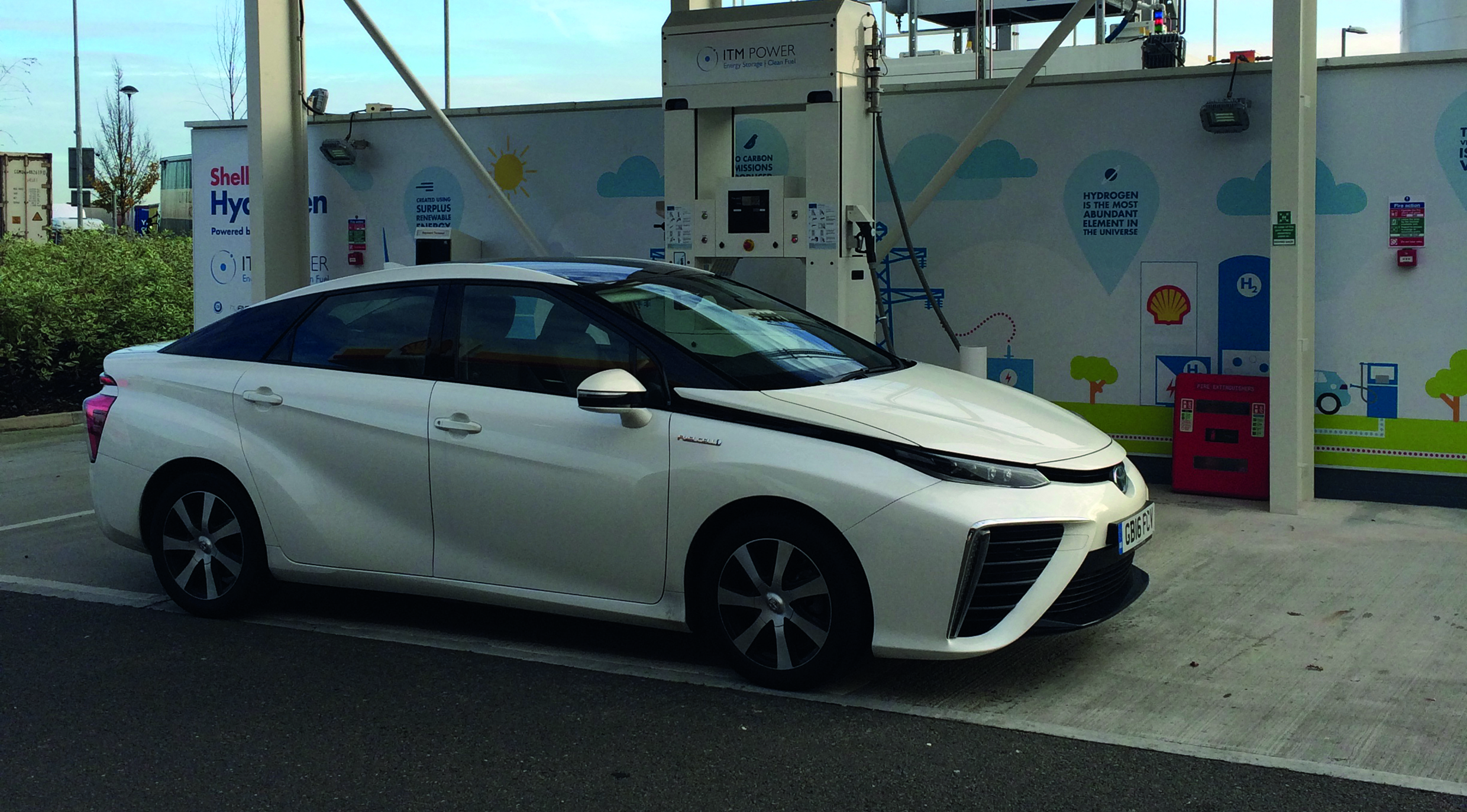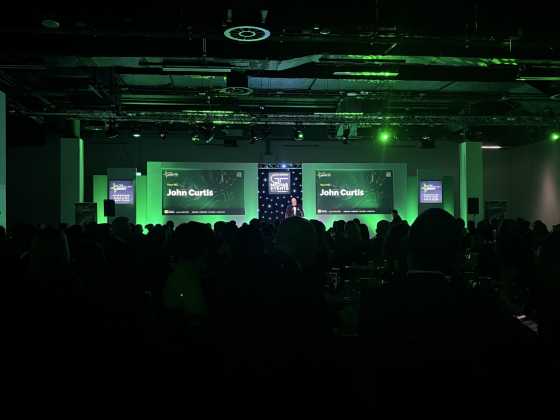Toyota: beyond sustainable vehicles

Before buying an alternatively-fuelled vehicle, more information needs to be sought than just tailpipe emissions, says Toyota’s Jon Hunt. Angela Pisanu finds out more
With the sale of new conventional diesel and petrol ICE engines to be banned by 2040, more attention has turned towards alternatively-fuelled vehicles. Many of the headline-grabbing attention is given to battery electric vehicles. But before buying any type of alternatively-fuelled vehicle, the right questions must be asked, the big picture must be considered, and the correct information must be sought. This is according to Toyota’s Jon Hunt, who has been working for the company for 25 years in different roles, and is currently responsible for Toyota’s hydrogen fuel cell vehicle (FCV), the Mirai.
“When it comes to pure-electric vehicles, people look at the hole in the wall where they can charge. But they don’t ask where the electricity comes from and whether the grid has capacity to generate it.
“They don’t ask about the battery production and how sustainable that process is.
“And finally, they don’t look at the grid emissions.”
Jon explains that battery production can be very carbon intensive if clean energy is not used. In the case of a 100 kilowatt battery, 15-20 tonnes CO2 can be emitted during its production, meaning there is over 80g CO2 embedded in the battery.
When it comes to charging a battery electric vehicle, grid emissions should also be considered. Depending on the carbon intensity of the grid at the time, this could amount to around 41g CO2/km.
So although a battery electric vehicle has zero tailpipe emissions, its embedded emissions should be considered – and it is this information that is not communicated fully in the promotion of fully electric vehicles, believes Jon.
Sustainable operations
Being sustainable in its entire operations is therefore something that Toyota takes very seriously and is very open about.
“We make low-emission vehicles but you have to look at the wider aspect,” explains Jon. “We are a resource intense global company so we have to look at all aspects of what we do, from the resources we use to production, lifetime support and disposal. I think that’s not always understood in terms of what the environmental impacts are across the board.”
Toyota’s engine plant at Deeside has 12,680 solar panels, which generates around 3,475,000kWh each year, enough energy to build 22,500 engines.
The firm’s current environmental plan is to be zero emissions by 2050, both in the vehicles it produces and the processes it uses to make vehicles.
So what is Toyota’s future fuel of choice? “We believe electric powertrains are the future, but are not fixed on one energy source,” explains Jon.
Electric powertrains currently come in many different guises – mild-hybrid, full-hybrid, plug-in hybrid, battery electric, and hydrogen fuel cell – and the differences are often not communicated properly, according to Jon.
Hydrogen fuel cell vehicles, for example, are electric vehicles, “the difference being how, where and how quickly you get your electricity,” explains Jon. A fuel cell produces electricity through a chemical reaction in the fuel cell between hydrogen and oxygen, and emits only water vapour from the tailpipe. It refuels in the same time as a normal vehicle.
Explaining hybrids
Full-hybrids meanwhile use an electric powertrain, and in effect, have three power sources: a petrol engine, battery and regenerative braking. Jon explains: “Any of those three can operate to run the vehicle at any point in time, either independently or together.”
Jon continues: “One thing people don’t necessarily understand is that every one of our hybrid vehicles is an electric vehicle. We have something that is referred to as full hybrid system. This consists of a petrol engine and a fuel tank but we also have a full electric powertrain which has got an electric motor and battery with enough power to drive the vehicle at any speed.”
Toyota and Lexus have 17 different hybrid models in the UK. Jon explains why a hybrid system is inherently more efficient: “The engines in our hybrid vehicles are not what you would think as a normal petrol engine – they are very high performing and very lightweight. We use the Atkinson cycle engine. This in itself has very low torque and is not powerful enough to fully operate a vehicle at high speed. But they are extremely energy efficient – up to 40 per cent energy efficient where normal internal combustion engine can be as low as 20 per cent. We use these efficient engines without compromising on performance because we can rely on the electric powertrain to provide supplementary power when needed.” Furthermore, unlike full battery EVs, hybrids will charge themselves by using the petrol engine or through regenerative braking minimising inconvenience.
Plug-in hybrids meanwhile need to be charged to typically give around a 30‑mile electric range, but Jon warns that if the technology is not used correctly, it can result in an inefficient petrol vehicle being driven and none of the benefits an electric vehicle.
Pure battery electric vehicles have other limitations aside from range and the “embedded emissions” that should be considered, Jon points out. There is currently no international standards for charging systems, meaning there are several different plugs, different voltages and different combinations. What’s more, charging will always take time and degrade the battery.
What hydrogen offers
Toyota has been developing hydrogen fuel cell vehicles (FCV) for over 25 years, and released the Mirai, its first mass production FCV in 2015.
Hydrogen is emission free and non-toxic, producing only water when used. It is also very energy‑dense; three times that of diesel and 130 times more energy dense than lithium‑ion.
Unlike the long charging time of battery electric vehicles, hydrogen FCVs can be refuelled within minutes, much like refuelling with petrol or diesel, and can do over 300 miles on a tank. The limitations that exist for this fuel however are infrastructure and public acceptance, Jon says.
There are currently only a handful of publicly available hydrogen refuelling stations in the UK, but more are in the pipeline. Fuel giant Shell opened its first hydrogen refuelling station at Cobham services on the M25 and has plans for more. The hydrogen at Cobham is generated on‑site using an electrolyser, meaning the hydrogen does not have to be transported.
Additionally, the hydrogen can be produced directly from renewables on site, such as in Rotherham, Rainham and Swindon, meaning no need to rely on the grid.
Any excess hydrogen can be piped into the existing gas network and used in the same way as our natural gas without much work. Jon explains. “If you think about what the gas network is really, it’s just storing energy in the form of natural gas. If you could replace that gas with a renewable rather than a fossil fuel then you are improving the overall efficiency of the energy sector.”
When people argue that producing hydrogen is expensive, Jon points out that it could already be created using the 1TWh of unused power that is available in the UK due to excess generation or unused renewables. If that unused power was used to create hydrogen, that would be enough to power around 90,000 vehicles 12,000 miles annually.
Overall, Jon believes that all alternatively‑fuelled vehicles have a role to play in the future because different power sources can work well in different applications. Battery electric vehicles for example can work very well for people who only have short distances to travel.
Jon concludes: “You can only demonstrate and make an impact with a particular system if you sell it in a range of products and at volume. If you only sell one model, then you are focusing all your attention on one thing. It could be very good in terms of performance and emissions, but is it practical, and will it sell in the mass market?
“People have different requirements and Toyota is very proud to have such a large range of alternative powertrains to offer customers.”






